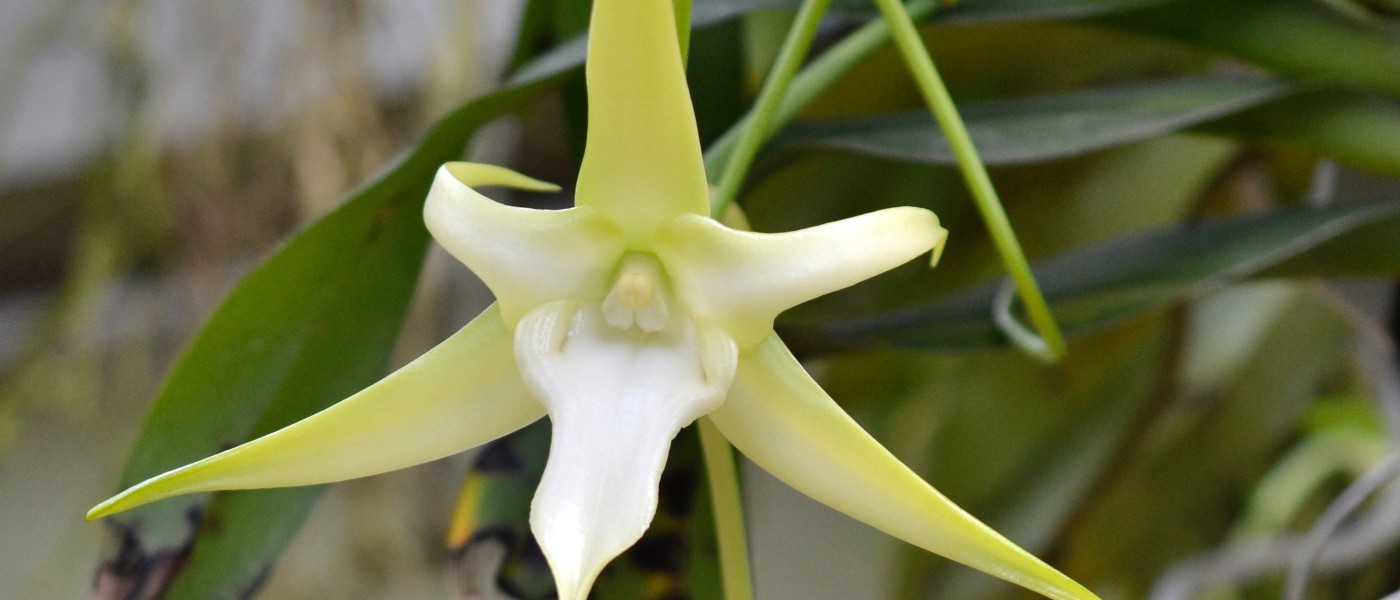Darwin’s Orchid in Bloom
A specimen of Angraecum sesquipedale, sometimes referred to as Darwin’s orchid, is in bloom at Brooklyn Botanic Garden. In 1862, this species captured the attention of Charles Darwin when he encountered one among a batch of different orchids sent to him from Madagascar by an associate. Its flower has an unusually long nectary tube (up to 14 inches), which made Darwin write to a friend at Kew Royal Botanic Gardens, “Good Heavens what insect can suck it?"
Darwin eventually decided that this orchid must be pollinated by an insect with a tongue long enough to reach the nectar at the bottom of the tube. Both the orchid and the insect must have developed their particular features over many generations, adapting to each other little by little. At the time, no long-tongued moth capable of accessing this nectar was known to visit Angraecum sesquipedale or even to exist on Madagascar. Though ridiculed by some of his peers, Darwin hypothesized that such a species must exist. Much later, in 1907, a hawk moth with the requisite proboscis (Xanthopan morganii) was indeed found there.
The Darwin’s orchid on display in the Aquatic House has been in BBG's collection since 2009 and was several years old when it arrived. Like most orchids, it blooms once a year, typically in January or February. This year’s bloom is a little later than usual. The white flowers are fragrant at night, a good strategy for attracting nocturnal moths. (Unfortunately, visitors won't have the chance to catch their nocturnal scent.) The Darwin orchid’s lovely flowers will persist for a couple of weeks and are well worth seeing in person.


